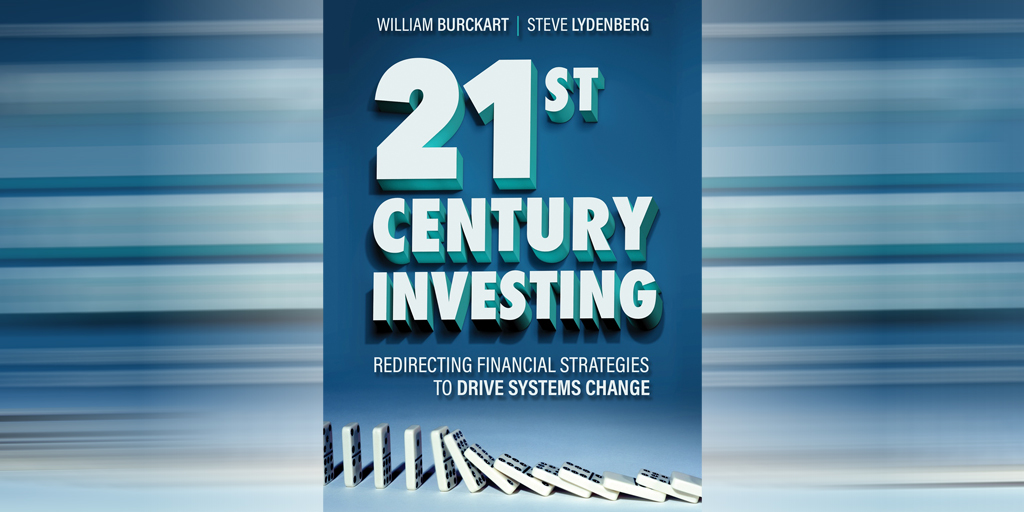In what feels like a lifetime ago, way back in 2015, I was working as a consultant to investors interested in sustainability and impact. I had written a report for a financial services association that challenged the industry to do a better job at measuring the impact of the investments they were making.
The group was interested in “doing well and doing good” with their investments. But there was no clear way to prove that a particular investment was truly doing both of those things.
At the time, plenty of companies were slapping on the “sustainable” label more as a window dressing than anything substantial. As one investor put it, this was “like adding .com to your name in 1999.” In my draft report, I proposed a way of measurement that, I hoped, would integrate the full context of an investment to illustrate real, tangible impact.
I’d asked my writing buddy, Steve Lydenberg, to read the draft and tell me what he thought. Steve and I worked together previously on New Frontiers of Philanthropy, our book about the reshaping of global philanthropy and social investing in the early 2010s. Steve is one of the godfathers of sustainable investment. He joined with Amy Domini and Peter Kinder in 1990 to create the first index to utilize social and environmental standards, and was the founding director of the Initiative for Responsible Investment at Harvard’s Kennedy School of Government. I got in the sustainable investing game in 2008, trailing Steve by about three decades.
Steve’s feedback was simple and straightforward: “It’s fine,” he shrugged, tossing the stapled pages back to me over our half-eaten pastries. Not the reaction I was hoping for.
Cringing, I asked him to clarify what “fine” meant.
“What you’re talking about is basically version 2.0 of sustainable investing,” he told me. “What I’m working on now is integrating systems thinking.” I realized I was playing tic-tac-toe with my linear thinking, while Steve was playing three-dimensional chess.
System-level investing
That conversation over pastries spurred me to join Steve on a path that has led to our latest book—21st Century Investing: Redirecting Financial Strategies to Drive Systems Change, in which we lay out a roadmap for how investors can shift their investment practices to meet the challenges of our modern times. Over the past five years, we have examined a diverse set of investors that have taken practical steps to incorporate global systems challenges into their daily investing.
The big idea: Not just a few investors but the whole financial community needs to move beyond a portfolio focus to a focus on entire systems.
When we say systems, we are talking about those large social, financial, and environmental foundations of society necessary for any successful investment. At the broadest levels, social systems — cross-cut by the racial and gender dynamics in any given locality—include healthcare, food and water security, fair employment, freedom of expression, consumer safety, economic and environmental justice, and education and training.
That systems focus has been core to the mission of TIIP (The Investment Integration Project), a consulting services and applied research firm. TIIP coined the term “system-level investing” and started helping investors understand the big picture context of their investments, and the feedback loops between their investments and the planet’s overarching systems, that make profitable investment opportunities possible.
In today’s increasingly complex world, the investment community can no longer ignore these feedback loops. The point may seem obvious to impact investors in a post-pandemic, post racial reckoning world; but wasn’t so much even just six years ago. Now it is clear that many investors believe that making money and solving global challenges are not just compatible, but synergistic; and we emphatically agree.
Financial systems include fair and honest markets, access to basic services, and transparency of data. Global environmental systems include climate stability, natural resources, oceans and fresh water, forests, and arable land. These large systems are in turn made up of subsystems. All are interconnected and ultimately impact one another.
What, why and how
Understanding these systems—and ensuring their resilience— is crucial in an increasingly populated, complex, and interconnected world, where a disruption in one can cause multiple others to fall like dominoes.
To navigate this bumpy terrain, 21st Century Investing essentially provides the what, why, and how of system-level investment:
- What it means to manage system-level risks and rewards;
- Why it is imperative to do so now; and
- How to integrate this new way of thinking into current practice.
The six key elements are the same for all investors: set goals, decide where to focus, allocate assets, apply investment tools, leverage advanced techniques, and evaluate results. For each step along the way we illustrate the need for and benefits of incorporating a system-level perspective.
Some in the investment community have already set off down the road to a genuinely system-oriented approach. Those making progress invest in portfolios entirely targeted or heavily weighted toward social and environmental solutions. They advocate for public policies that reduce systemic risks and advance the health and resilience of crucial systems. They engage at industry levels to set standards and norms. They collaborate with others to amplify their influence. They set clear goals for system- level (not simply portfolio-related) progress. And they report on how they are working to achieve these goals.
The book highlights a number of examples of systems-level investors in the U.S. and abroad, including:
- Bet the farm. Self-identified impact investors such as the KL Felicitas Foundation that intentionally seek to generate social and environmental benefit through their investments along with financial returns. In addition, as part of their commitment to essentially “bet the farm” on impact investing, Felicitas has extended its mission to enabling the global financial system to achieve greater social and environmental impact.
- Proven tools. Prudential Global Investment Management (PGIM), a subsidiary of the global financial services behemoth, which is extending the use of conventional investment techniques to address a systemic issue: the challenges of local poverty alleviation, affordable housing, youth training, access to capital, and income inequality.
- Across asset classes. Private foundations like F.B. Heron that are considering how to use each asset class to maximize the societal benefits it was originally designed to create. Fixed income, for example, can naturally create public goods when issued by governments. Public equities are well-suited to influence incremental change in large firms. Venture capital is a disruptor of business models and services.
- Climate focus. The New Zealand Superannuation (NZ Super), a sovereign wealth pension fund in New Zealand, that is using a diverse range of investment tools to address a single system-level challenge: climate change. Not only did NZ Super incorporate climate change into its asset pools, but it promoted—proselytized for it, if you will—this framework to other sovereign wealth funds.
Big leap
So, yes, finance has certainly evolved, but not fast enough. It’s time for a big leap into the future with a new era of investing with a vision that expands beyond individual returns and beating the performance of your neighbor.
There is a burgeoning interest among a wide range of investors in generating positive social and environmental returns along with profits. As we describe in 21st Century Investing, such positive impact is not only what investment should do but what it must do if the financial community is to do its part to avoid a multiplicity of collapses and crises that will threaten our complex world in the coming decades.
While the challenge may seem daunting, Steve often reflects on how far we have come. When he started in this business more than 40 years ago, you had to send a postcard through the mail to request a corporate annual report. A press search meant a pair of scissors and the daily papers. There were no overviews of the social and environmental records of the S&P 500.
It took almost a decade after Domini created the first SRI index in 1990 before DowJones and FTSE4Good launched similar products. Now, a firm like MSCI offers over 700 sustainability indexes and the smart devices in our pockets allow access to gigabits of data from anywhere in the world.
Investors of all stripes have the opportunity to advance systems-level change as early adopters of a transformational movement. Steve and I have been on this journey together for over five years, and there are many more steps for us to take.
As you walk with us down this path, please share with us the good and the bad, the simple and the complex in your transition to system-level investing. For those not yet on this path to a new normal for investing, we welcome you join us.
William Burckart is president and COO of The Investment Integration Project, or TIIP. With Steve Lydenberg, he is the author of 21st Century Investing: Redirecting Financial Strategies to Drive Systems Change.












